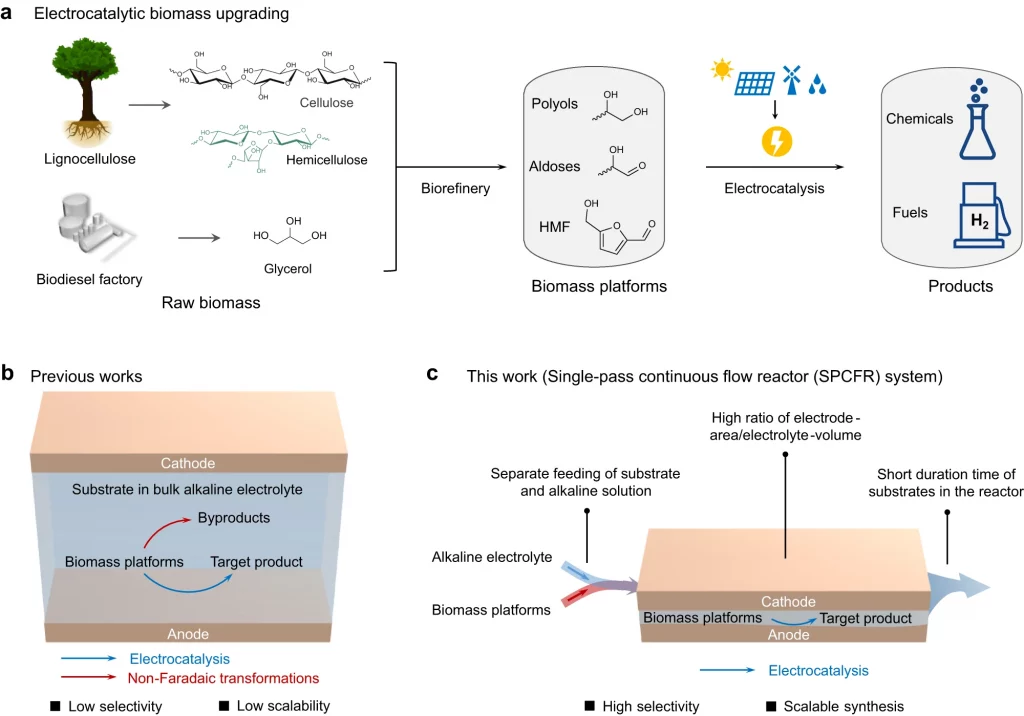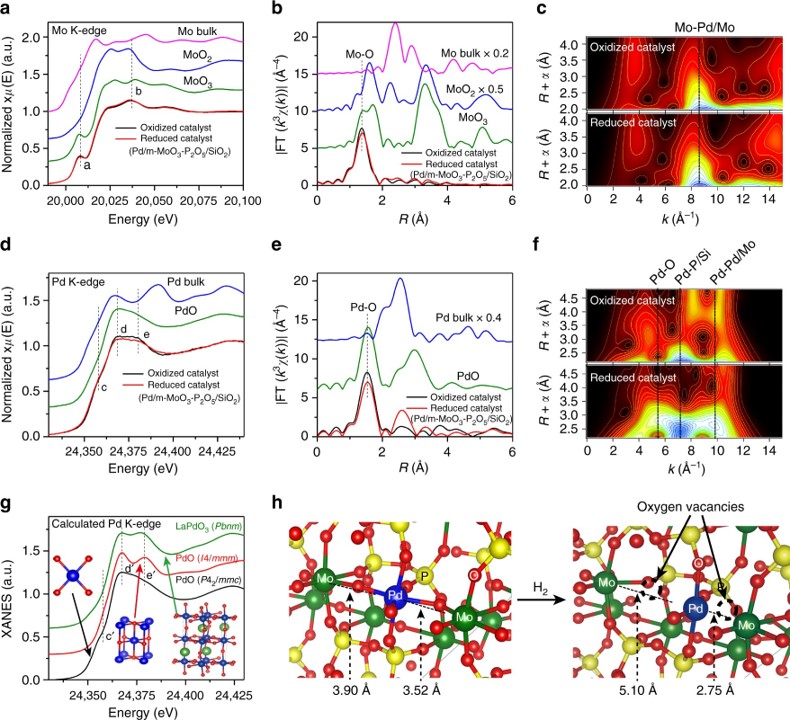58.Scalable electrosynthesis of commoditychemicals from biomass by suppressingnon-Faradaic transformations
Zhou, H.,Ren, Y.,Yao, B.,Li, Z.,Xu, M.,Ma, L.,Kong, X.,Zheng, L.,Shao, M.,Duan, H.*
Nature Communications 2023, 14 (1).
DOI: 10.1038/s41467-023-41497-y

Abstract
Electrooxidation of biomass platforms provides a sustainable route to produce valuable oxygenates, but the practical implementation is hampered by the severe carbon loss stemming from inherent instability of substrates and/or intermediates in alkaline electrolyte, especially under high concentration. Herein, based on the understanding of non-Faradaic degradation, we develop a single-pass continuous flow reactor (SPCFR) system with high ratio of electrode-area/electrolyte-volume, short duration time of substrates in the reactor, and separate feeding of substrate and alkaline solution, thus largely suppressing non-Faradaic degradation. By constructing a nine-stacked-modules SPCFR system, we achieve electrooxidation of glucose-to-formate and 5-hydroxymethylfurfural (HMF)-to-2,5-furandicarboxylic acid (FDCA) with high single-pass conversion efficiency (SPCE; 81.8% and 95.8%, respectively) and high selectivity (formate: 76.5%, FDCA: 96.9%) at high concentrations (formate: 562.8 mM, FDCA: 556.9 mM). Furthermore, we demonstrate continuous and kilogram-scale electrosynthesis of potassium diformate (0.7 kg) from wood and soybean oil, and FDCA (1.17 kg) from HMF. This work highlights the importance of understanding and suppressing non-Faradaic degradation, providing opportunities for scalable biomass upgrading using electrochemical technology.




